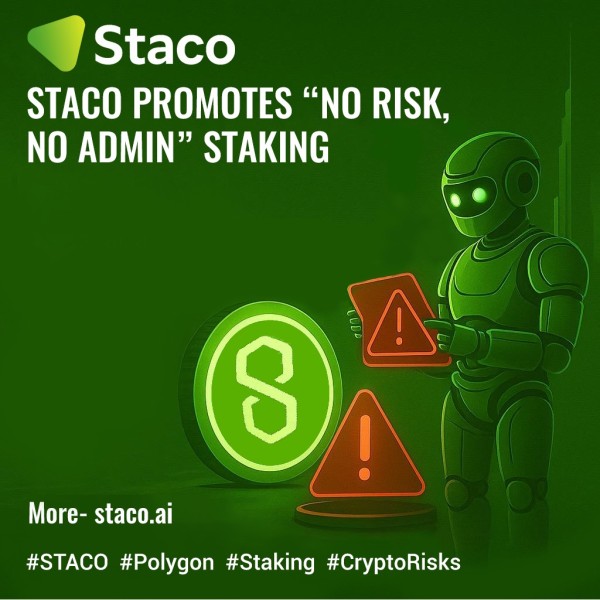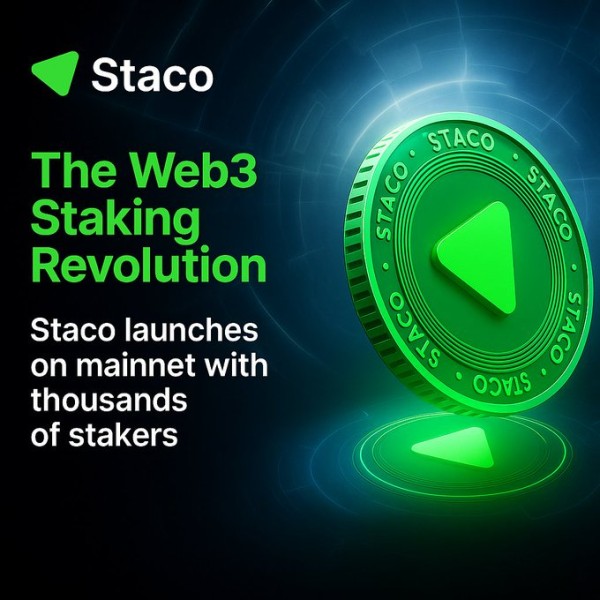
The Standard Trust Assurance Community (STACO) has released its Web3 protocol, which solves blockchain’s major interoperability problem. The STACO Network uses advanced cryptography and artificial intelligence and scalable architecture to link different blockchains through interoperable oracles which enable two-way communication between isolated ecosystems.STACO has got listings on CoinGecko, Dex-Trade and Indoex.
The STACO Network enables cross-chain data sharing and updates between blockchain systems through decentralized trust-based operations that eliminate the need for centralized exchanges or custodians.
The STACO Network Approach
The STACO system enables cross-chain data exchange through interoperable oracles which serve as its fundamental operational mechanism. The STACO validator network handles data packet processing and validation and secure delivery between source and destination blockchains. The system design enables decentralized applications to operate across Ethereum and Binance Smart Chain and Polygon and Tron and additional blockchain networks.
A Robust Layered Architecture
STACO Network operates through four distinct layers which include the Transport Layer with decentralized oracle nodes and the Protocol Layer with smart contracts and staking mechanics and the Service Layer with interoperable tools such as token and NFT bridges and the Application Layer for developing seamless cross-chain applications. The combined functionality of these layers positions STACO as a blockchain-independent solution which serves developers and businesses and decentralized communities.
Security and Consensus Flexibility
Security stands as the primary focus of STACO through its implementation of various validation systems. The system allows projects to select between Proof of Stake validation and custom validator models and hybrid validation for improved flexibility. The consensus options provide developers and enterprises with security customization for their interoperability needs while protecting against malicious activities through validator incentives and staking mechanisms.
The system has been designed to adapt to Web3 ecosystem requirements through its scalable architecture.
Scaling for the Future
The STACO Network operates at high speeds while maintaining quick transaction times because it was designed to expand according to Web3 requirements. The protocol achieves high performance through vertical and horizontal scaling which reduces network congestion and minimizes latency to support increasing high-performance blockchain requirements. STACO operates as a decentralized Layer-2 solution which enables fast communication between different blockchain networks through its ability to handle large transaction volumes.

Market Opportunity and Use Cases
The interoperability market sector shows extensive potential because it remains in its development stage. The growing popularity of decentralized finance and tokenization and gaming and NFTs and enterprise blockchain adoption makes cross-chain operation an absolute necessity. The STACO Network supports various use cases including DeFi markets that span multiple chains and interoperable exchanges and multichain lending platforms and yield optimization protocols and asset bridges. The STACO infrastructure supports various real-world applications through its infrastructure including enterprise supply chains and sustainability tracking systems.
The Utility of the $STACO Token
The $STACO token functions as the network’s primary asset for transaction processing and validator reward distribution and token burning operations. The STACO token system allows users and smart contracts to compensate node operators through token payments for data transfer services and validators secure the network through token staking. The token supply is limited to 100 million units which enables sustainable operations through specific token distribution for validator rewards and masternodes and project reserves and marketing and liquidity provision and long-term development.
Roadmap Toward Global Adoption
The project roadmap outlines specific goals for 2025 through 2026 which include token releases and testnet and mainnet deployment and cross-chain token and NFT transfer protocol implementation. STACO plans to introduce new consensus methods and an interoperable DeFi SDK and multichain token standards during 2026 to create the future of blockchain adoption.
A Vision for Trust and Growth
STACO represents a secure blockchain system which enables interoperability and scalability according to its mission. The project welcomes developers and investors and enterprises to collaborate on establishing a worldwide trust system which enables assets and applications and communities to move freely between blockchain networks. The team declares that users should maintain their coins in wallet storage because the value will increase.

About STACO Network
STACO Network operates as a blockchain network that uses decentralized oracle-based communication protocols to achieve interoperability. The STACO platform enables developers to construct decentralized applications through its scalable and secure cross-chain communication system which serves DeFi operations and enterprise needs.
Learn more at stacochain.com
Explore documentation at docs.stacochain.com
Track progress on the blockchain explorer,
Visit staco.ai for insights into AI-powered blockchain applications.
Media Contact
Organization: STACO
Contact Person: Alex
Website: https://staco.ai/
Email: Send Email
City: Moscow
Country:Russia
Release id:33946
The post STACO Network Unveils Next-Generation Web3 Protocol for Interoperable Oracles appeared first on King Newswire. This content is provided by a third-party source.. King Newswire makes no warranties or representations in connection with it. King Newswire is a press release distribution agency and does not endorse or verify the claims made in this release. If you have any complaints or copyright concerns related to this article, please contact the company listed in the ‘Media Contact’ section
Disclaimer: The views, suggestions, and opinions expressed here are the sole responsibility of the experts. No journalist was involved in the writing and production of this article.
